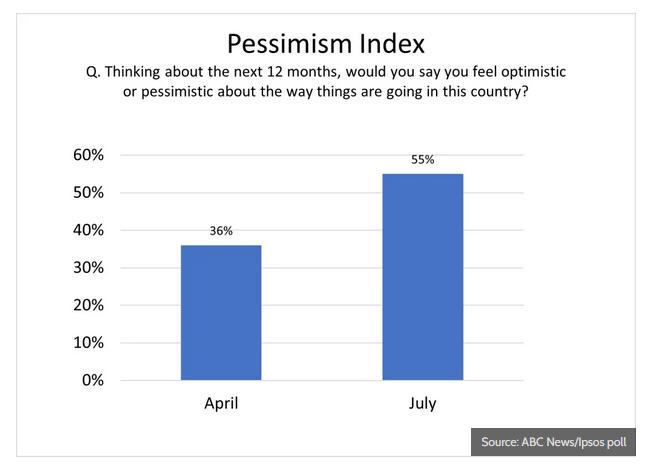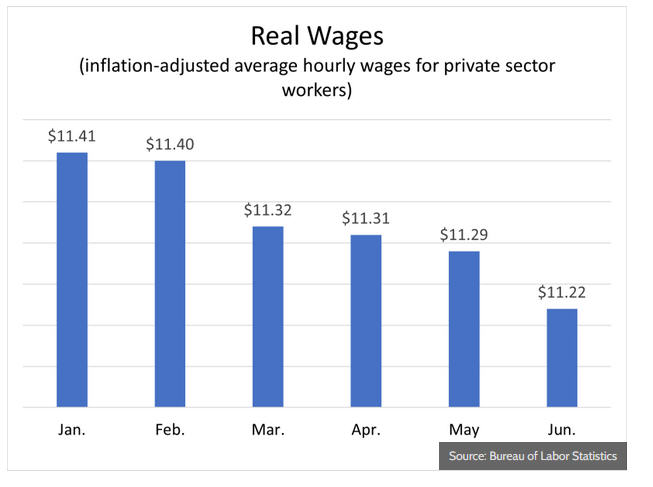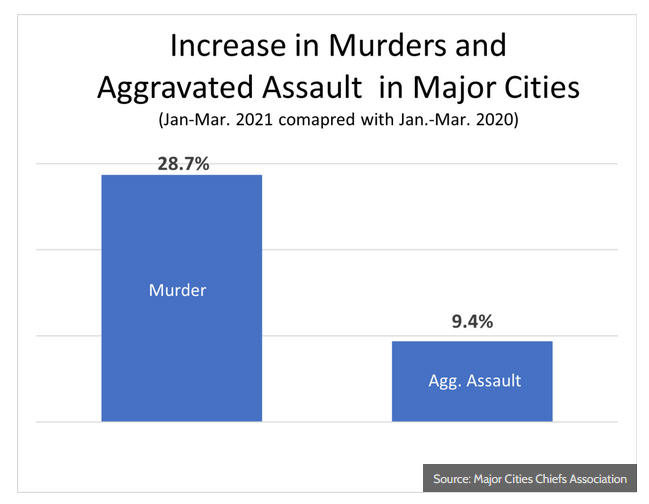In the 1970’s Chicago Economist Robert Barro coined the phrase ‘misery index.’ The phrase was used to describe a number obtained by adding the unemployment rate to the inflation rate. During the Carter administration, that number ranged between 12 and 17 percent. During the Trump administration, that number ranged between 5 and 7 percent. I shudder to think where it is headed during the Biden administration.
Yesterday The New York Post posted an article about the current rate of inflation.
The article reports:
Inflation continued to surge in July, but appeared to settle close to the fastest pace in almost 13 years as the economy continues to emerge from the pandemic, the feds said Wednesday.
The Labor Department’s Consumer Price Index, which measures a basket of goods and services as well as energy and food costs, jumped 5.4 percent in July from a year earlier.
That’s the same as June’s 5.4 percent year-over-year rise in prices, which marked the biggest 12-month rise since August 2008, just before the financial crisis sent the US into the worst recession it had seen since the Great Depression.
Consumer prices rose 0.5 percent from the month prior, the Labor Department said.
Economists surveyed by Dow Jones expected a 5.3 percent year-over-year spike in July and monthly increase of 0.5 percent.
The core consumer price index, which excludes volatile food and energy costs, rose 4.3 percent from a year ago, lower than the 4.5 percent year-over-year jump that the index saw in June, which marked the fastest acceleration since 1991.
The article concludes:
Federal Reserve officials have so far maintained their position that inflation is mostly temporary and will likely subside this year. They’ve cited this as a reason why they haven’t yet pulled back on their economic support measures like the bond-buying program.
Last week’s July jobs report showed that the country added a whopping 943,000 jobs in the month, more than expected, in a sign that the labor market recovery could finally be gaining steam.
Fed officials have said they will look for more confirmation of that in the next few jobs reports before a tapering of their financial support measures will be considered.
“I think this keeps taper talk on the table because inflation is staying relatively high and transitory may mean a little longer,” Minopoli said.
“If the supply chain kinks and businesses raising prices remains sustained, ‘transitory inflation’ might be a little less transitory than Fed Chair Powell will like and the hawks at the Fed may push a little harder on timing and speed of taper,” he added.
I remember the 1970’s–gas lines and all– and I don’t want to go back there.









